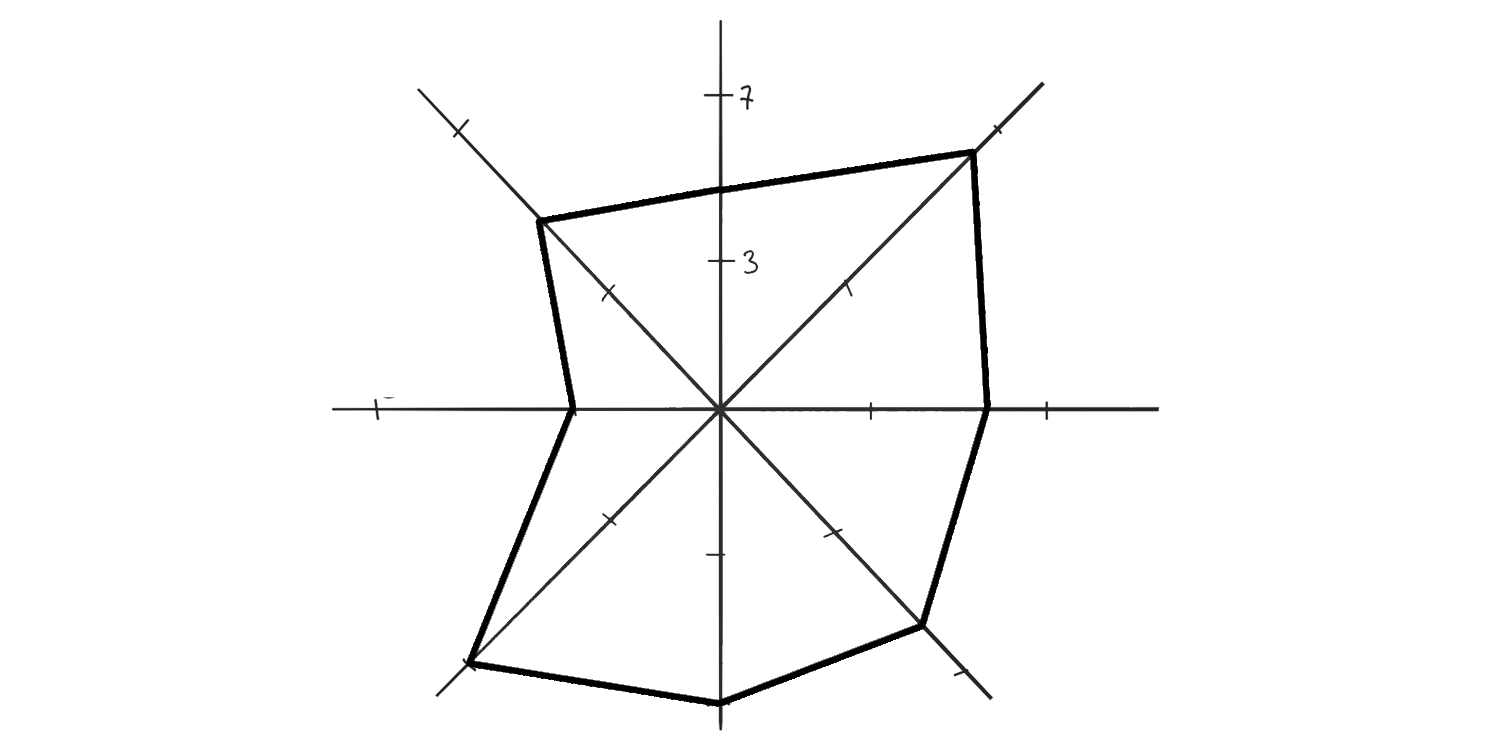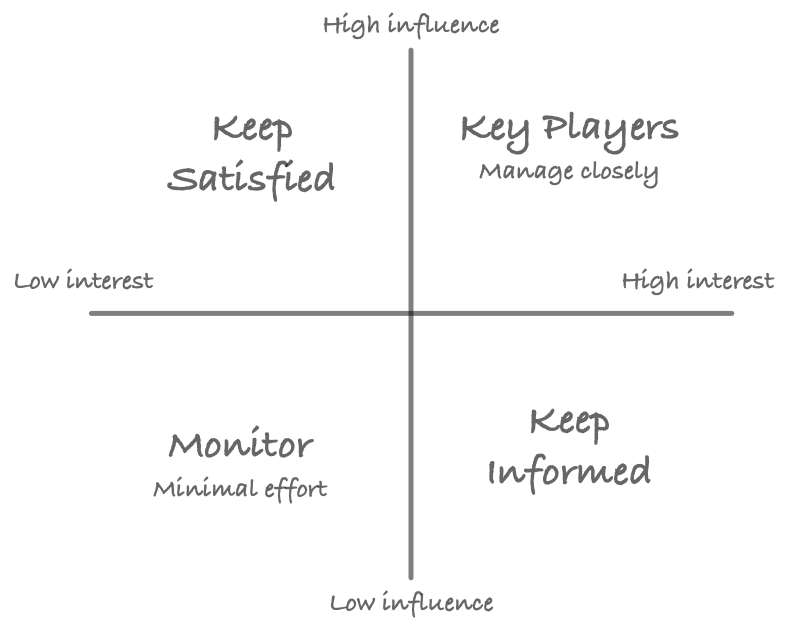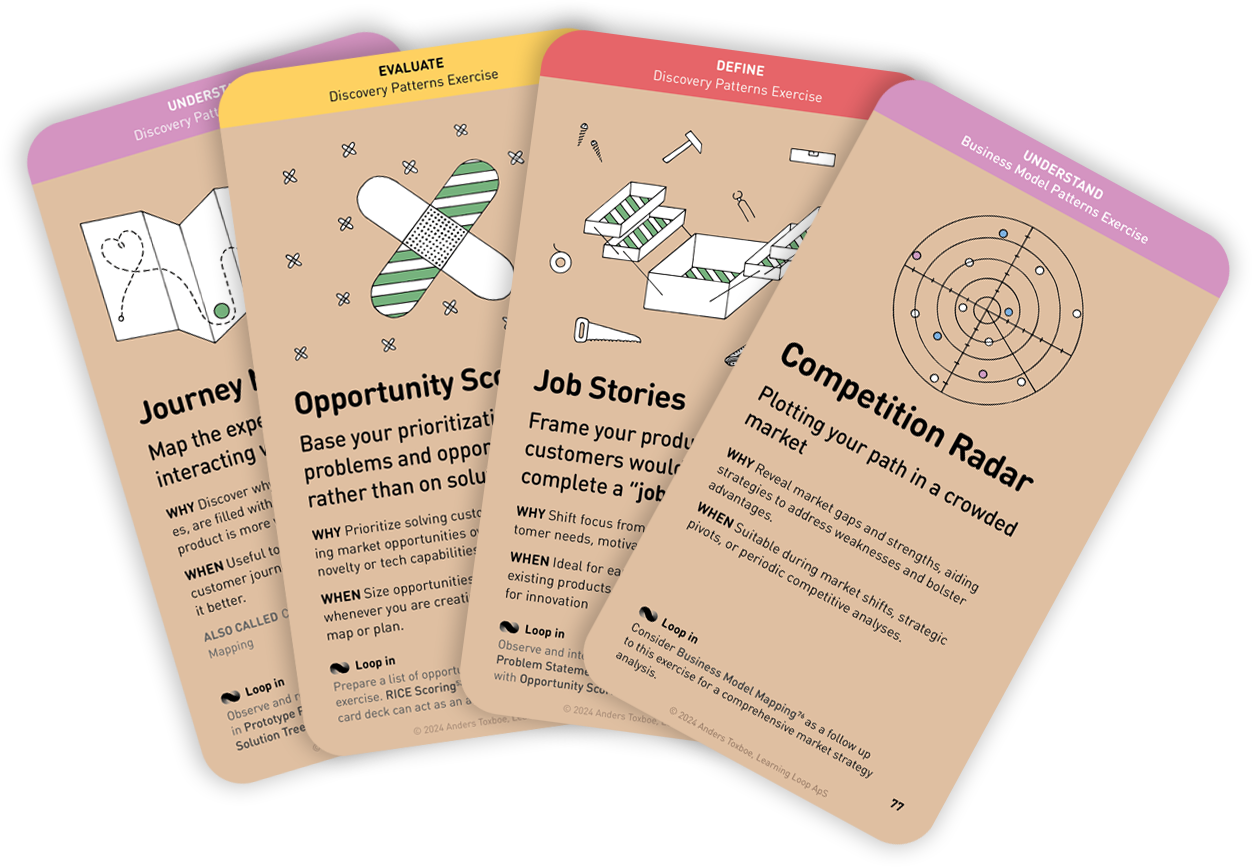
Why: Map who can significantly impact project decisions, who may be impacted, and how
When: Use during project initiation or planning stages to identify and analyze stakeholder dynamics
Instructions for running this play
- Identify stakeholders. Conduct a 5 minute Silent Storming with your group for each of the following stakeholder groups:
- Leaders. Project sponsors, decision makers, and people whose decisions have considerable influence.
- Contributors. Without these, your project can’t reach its objectives. It includes your team, but also suppliers, clients, and officials.
- Bystanders. Although they are not directly interested in your project, they could take a stand for or against it.
- Each member Playbacks the notes by placing them on a blank board. Mark a note with ★ if it is a decision maker, ⨁ if the relationship is good, and ⊖ if the relationship is bad.
- If groups of stakeholders surface, cluster and label them using Affinity Mapping.
- Use lines to describe their relationship to each other.
Bonus step: Draw a matrix with two axes: Influence and Interest. Plot your stakeholders on the map to decide on the relationship you need with them.

Tips to perfect this play
Master and adapt the play to fit your context and needs.
Tip: Power vs interest
Use a grid to map stakeholders based on their power and interest in the project, enabling teams to prioritize engagement efforts and focus on influential stakeholders.
Tip: Decision impact
Create a matrix to assess stakeholders' influence over project decisions and their potential impact on project outcomes, helping teams allocate resources and mitigate risks.
Tip: Engagement plan
Extend the exercise by developing a stakeholder engagement plan, outlining strategies, activities, and communication channels to effectively engage and manage stakeholders throughout the project lifecycle.
Tip: Combine with the RACI matrix
Consider using the dimensions of the RACI Matrix
A collection of workshop exercises that will help you ditch dull meetings and facilitate with confidence. It will help you master the design process and have more productive time with your team. The card deck will be ready for purchase in the end of 2026 and is now undergoing rigorous testing.
Reserve your deck!